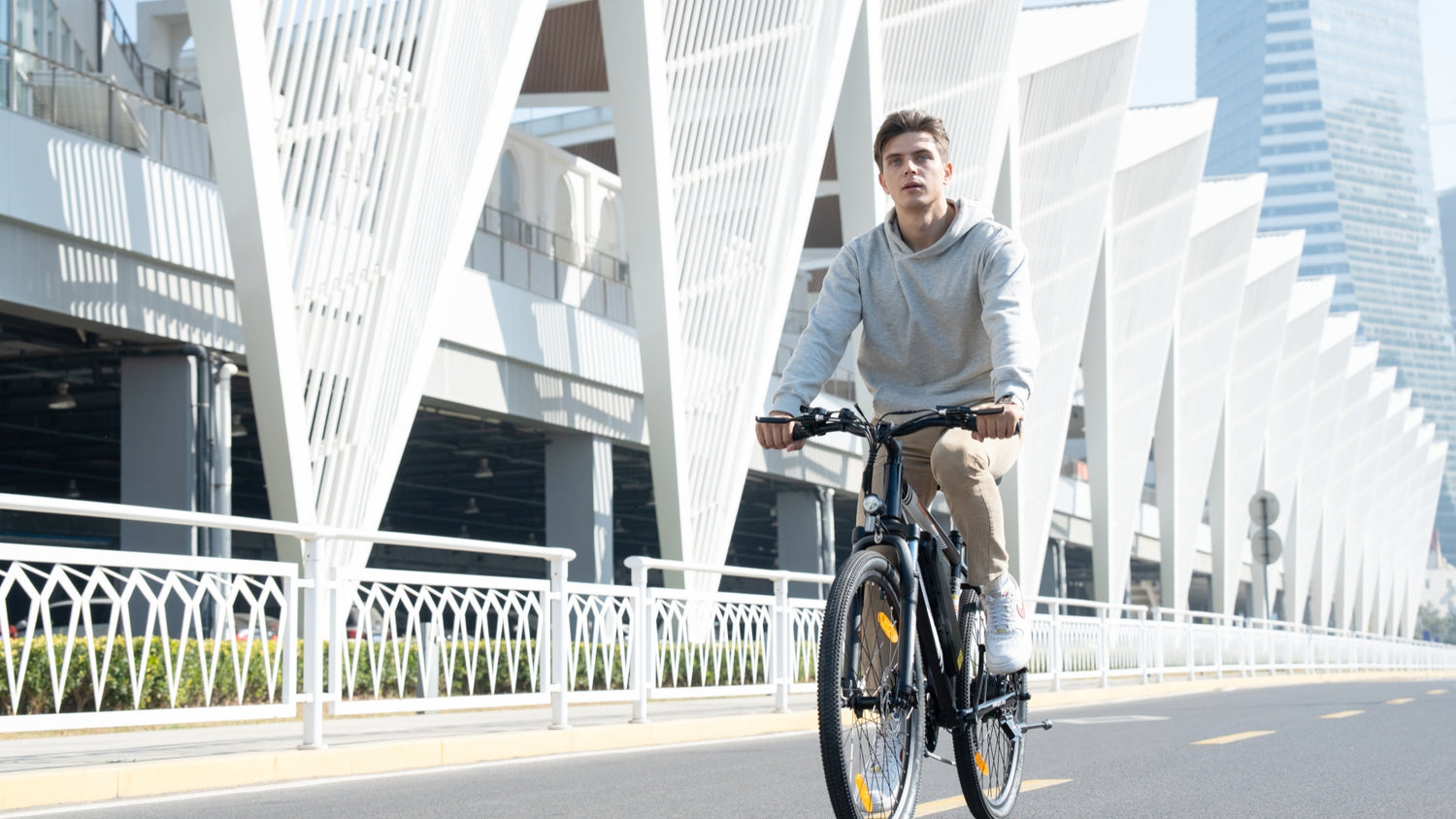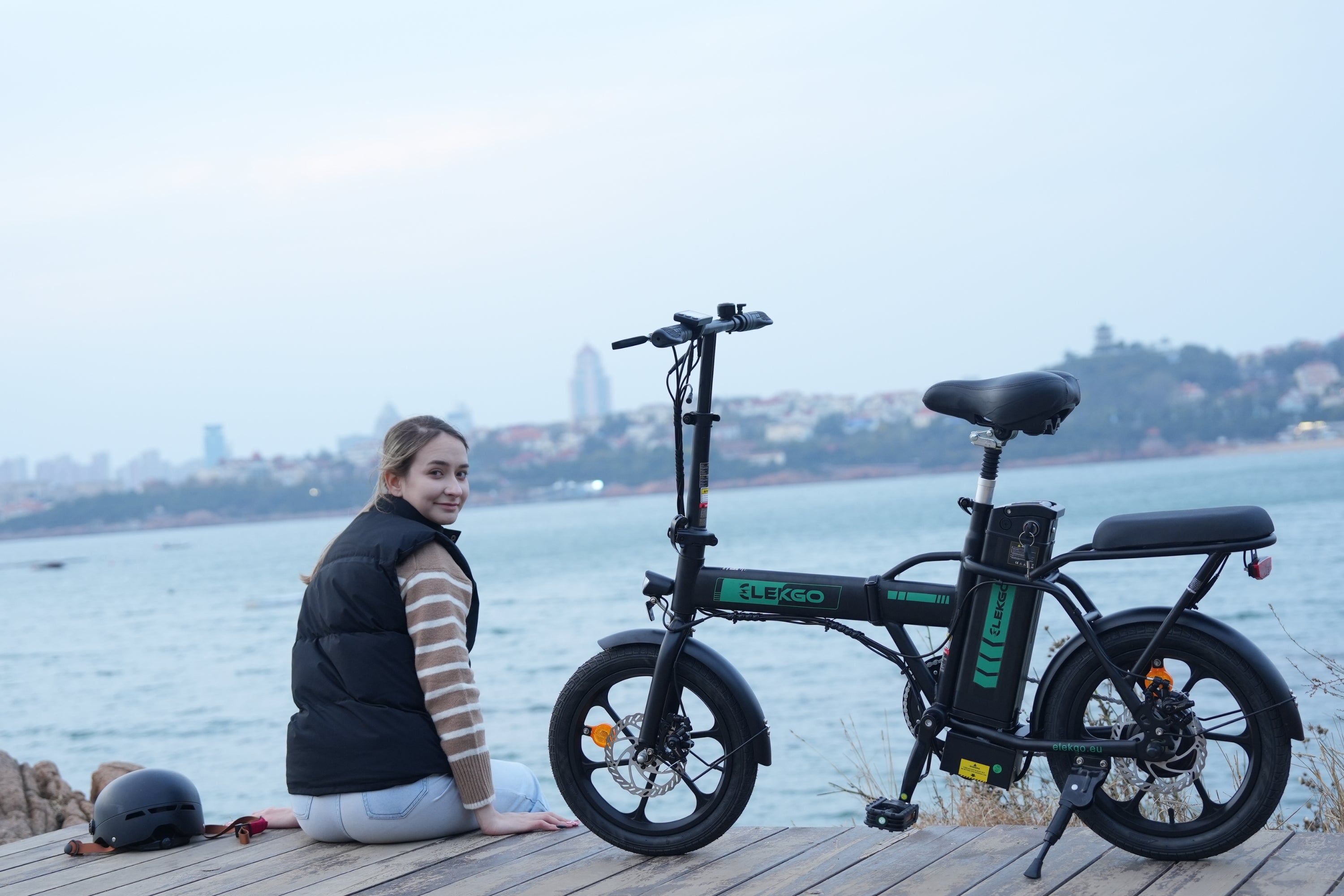Welcome to the world of ELEKGO, where we combine the joy of riding with the innovation of electricity. Our e-bikes are more than just a mode of transportation; they're a whole new experience. Although each model of e-bike is different, there are some basic components that define its functionality. In this blog, we take a deep dive into the important components that make an electric bike work.

The Heart of Electric Bicycles: Motor
Electric bicycles are an environmentally friendly and convenient means of transportation, and their motors are one of the important components of electric bicycles.
Judging from the working principle of the product, the working principle of the electric bicycle motor is mainly to provide electric energy to the motor controller through the battery, and the controller adjusts the size and direction of the current, and controls the speed and torque of the motor, thereby realizing the driving of the electric bicycle.
The motor of an electric bicycle has the advantages of high efficiency, energy saving, and environmental protection. The motor's speed and torque can be adjusted through the controller, allowing different driving speeds and power outputs to be achieved. At the same time, the motor does not produce exhaust gas and noise during operation, and is environmentally friendly.
So what is the torque of the motor?
Torque is the rotational force produced by an e-bike motor. It determines the bike's ability to climb hills and accelerate. More torque means better gradeability.
ELEKGO Motor Compliance:All ELEKGO electric bicycles are equipped with a 250-watt motor. This power rating is specifically chosen to comply with EU regulations, ensuring that our bikes are legally operable as standard e-bikes in Europe. Despite being limited to 250 watts, these motors pack a punch. They provide enough power to assist riders up hills and maintain a steady speed on flat terrain. This motor power is ideal for urban commutes and leisurely rides, striking a balance between efficiency and capability.
Power supply: Battery
The battery is the energy source of the motor and provides power to the motor.
E-Bikes are powered by rechargeable lithium-ion batteries, which store the energy needed to operate the electric motor.
These batteries are designed to be rechargeable and removable, providing convenience and flexibility. To power up, the battery must be plugged in while riding. Charging these batteries is very simple and usually takes 4-6 hours to fully charge.
The range you can achieve on a single charge is affected by a variety of factors: the rider's weight, riding style and the terrain traveled. Without a battery, an e-bike turns into a traditional bike, giving you the best of both worlds.
Electric bicycles are an environmentally friendly and convenient means of transportation, and their motors are one of the important components of electric bicycles.
Judging from the working principle of the product, the working principle of the electric bicycle motor is mainly to provide electric energy to the motor controller through the battery, and the controller adjusts the size and direction of the current, and controls the speed and torque of the motor, thereby realizing the driving of the electric bicycle.
The motor of an electric bicycle has the advantages of high efficiency, energy saving, and environmental protection. The motor's speed and torque can be adjusted through the controller, allowing different driving speeds and power outputs to be achieved. At the same time, the motor does not produce exhaust gas and noise during operation, and is environmentally friendly.
So what is the torque of the motor?
Torque is the rotational force produced by an e-bike motor. It determines the bike's ability to climb hills and accelerate. More torque means better gradeability.
ELEKGO Motor Compliance:All ELEKGO electric bicycles are equipped with a 250-watt motor. This power rating is specifically chosen to comply with EU regulations, ensuring that our bikes are legally operable as standard e-bikes in Europe. Despite being limited to 250 watts, these motors pack a punch. They provide enough power to assist riders up hills and maintain a steady speed on flat terrain. This motor power is ideal for urban commutes and leisurely rides, striking a balance between efficiency and capability.
Power supply: Battery
The battery is the energy source of the motor and provides power to the motor.
E-Bikes are powered by rechargeable lithium-ion batteries, which store the energy needed to operate the electric motor.
These batteries are designed to be rechargeable and removable, providing convenience and flexibility. To power up, the battery must be plugged in while riding. Charging these batteries is very simple and usually takes 4-6 hours to fully charge.
The range you can achieve on a single charge is affected by a variety of factors: the rider's weight, riding style and the terrain traveled. Without a battery, an e-bike turns into a traditional bike, giving you the best of both worlds.

Easy riding:Pedal Assist System (PAS)
One way to start an e-bike engine is to use the pedal assist feature. With pedal assist, you control the motor by pressing the pedal. PAS (Pedal-Assist System) is a technology commonly found in electric bicycles. It uses sensors and motors to work together to provide auxiliary power to the rider to reduce the burden of riding. The principle of the PAS power assist system can be simply summarized in three steps: the sensor detects the rider's pedaling force and speed, the controller processes the sensor signal, and the motor provides corresponding auxiliary power according to the controller's instructions.
The working principle of the PAS power assist system can be explained by the following example: when you start to pedal, the pedal sensor detects the pedal force and transmits this information to the controller. The controller calculates the amount of auxiliary power that needs to be provided based on the pedal strength and the rider's speed, and transmits the instructions to the motor. The motor provides corresponding auxiliary power by rotating the wheels according to the instructions of the controller. When you stop pedaling or reduce the intensity, the sensor will sense this change and transmit the corresponding signal to the controller and motor to stop or reduce the supply of auxiliary power.
The advantage of the PAS power assist system is that it can provide an appropriate amount of auxiliary power according to the needs of the rider, making riding easier and more comfortable. It can help cyclists overcome the resistance of slopes, reduce the fatigue of long-distance riding, and provide a larger riding range. In addition, the PAS system is also energy-saving and environmentally friendly. Riders can choose to turn off the auxiliary power at the appropriate time and rely only on human power to ride to save battery energy.
E-bikes often feature multiple levels of pedal assist designed to give riders the ideal amount of assistance they are looking for on any given adventure. ELEKGO e-bikes allow you to select different levels of pedal assistance via the display interface. This allows you to tailor your riding experience to your preferences or terrain. ELEKGO electric bicycles have three speeds to choose from, the first gear is 10 km/h, the second gear is 15 km/h, and the third gear is 25 km/h.
The Brains Behind Operations: Sensors
You might ask, how does the bike know how often and how hard you're pedaling?
To start the electric bike's motor, the pedal assist sends a signal as soon as the pedals start turning. The component that delivers this signal is called a sensor.
ELEKGO electric bicycles all use speed sensor.
How hard the rider pedals and the pedal assist level selected will affect the power contributed by the motor. On speed-based pedal assist systems, the manufacturer typically has a predetermined and preset speed for each pedal assist level. As the rider's pedaling cadence increases, the motor will continue to output until it reaches a predetermined threshold, maintaining output as needed across varying terrain, gear levels, and the rider's continued pedaling cadence.
If you prefer a leisurely ride, you can pedal in lower assist levels for less assistance. On the other hand, if you want to feel the wind on your face and experience the thrill of speed, you can crank the PAS level higher. The choice is yours!
Conclusion:
ELEKGO electric bicycles are more than just a means of transportation; they represent a fusion of traditional cycling and modern technology. Whether you’re commuting to work or exploring scenic routes, our e-bikes offer a versatile, efficient, and enjoyable ride. Embrace the future of cycling with ELEKGO!
One way to start an e-bike engine is to use the pedal assist feature. With pedal assist, you control the motor by pressing the pedal. PAS (Pedal-Assist System) is a technology commonly found in electric bicycles. It uses sensors and motors to work together to provide auxiliary power to the rider to reduce the burden of riding. The principle of the PAS power assist system can be simply summarized in three steps: the sensor detects the rider's pedaling force and speed, the controller processes the sensor signal, and the motor provides corresponding auxiliary power according to the controller's instructions.
The working principle of the PAS power assist system can be explained by the following example: when you start to pedal, the pedal sensor detects the pedal force and transmits this information to the controller. The controller calculates the amount of auxiliary power that needs to be provided based on the pedal strength and the rider's speed, and transmits the instructions to the motor. The motor provides corresponding auxiliary power by rotating the wheels according to the instructions of the controller. When you stop pedaling or reduce the intensity, the sensor will sense this change and transmit the corresponding signal to the controller and motor to stop or reduce the supply of auxiliary power.
The advantage of the PAS power assist system is that it can provide an appropriate amount of auxiliary power according to the needs of the rider, making riding easier and more comfortable. It can help cyclists overcome the resistance of slopes, reduce the fatigue of long-distance riding, and provide a larger riding range. In addition, the PAS system is also energy-saving and environmentally friendly. Riders can choose to turn off the auxiliary power at the appropriate time and rely only on human power to ride to save battery energy.
E-bikes often feature multiple levels of pedal assist designed to give riders the ideal amount of assistance they are looking for on any given adventure. ELEKGO e-bikes allow you to select different levels of pedal assistance via the display interface. This allows you to tailor your riding experience to your preferences or terrain. ELEKGO electric bicycles have three speeds to choose from, the first gear is 10 km/h, the second gear is 15 km/h, and the third gear is 25 km/h.
The Brains Behind Operations: Sensors
You might ask, how does the bike know how often and how hard you're pedaling?
To start the electric bike's motor, the pedal assist sends a signal as soon as the pedals start turning. The component that delivers this signal is called a sensor.
ELEKGO electric bicycles all use speed sensor.
How hard the rider pedals and the pedal assist level selected will affect the power contributed by the motor. On speed-based pedal assist systems, the manufacturer typically has a predetermined and preset speed for each pedal assist level. As the rider's pedaling cadence increases, the motor will continue to output until it reaches a predetermined threshold, maintaining output as needed across varying terrain, gear levels, and the rider's continued pedaling cadence.
If you prefer a leisurely ride, you can pedal in lower assist levels for less assistance. On the other hand, if you want to feel the wind on your face and experience the thrill of speed, you can crank the PAS level higher. The choice is yours!
Conclusion:
ELEKGO electric bicycles are more than just a means of transportation; they represent a fusion of traditional cycling and modern technology. Whether you’re commuting to work or exploring scenic routes, our e-bikes offer a versatile, efficient, and enjoyable ride. Embrace the future of cycling with ELEKGO!




Leave a comment
This site is protected by hCaptcha and the hCaptcha Privacy Policy and Terms of Service apply.